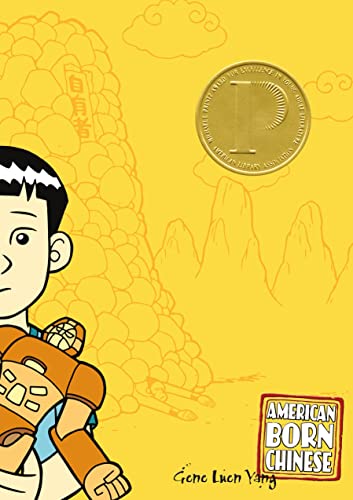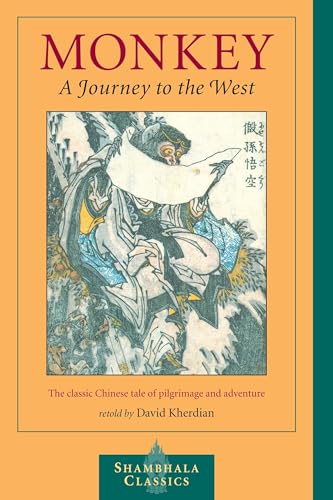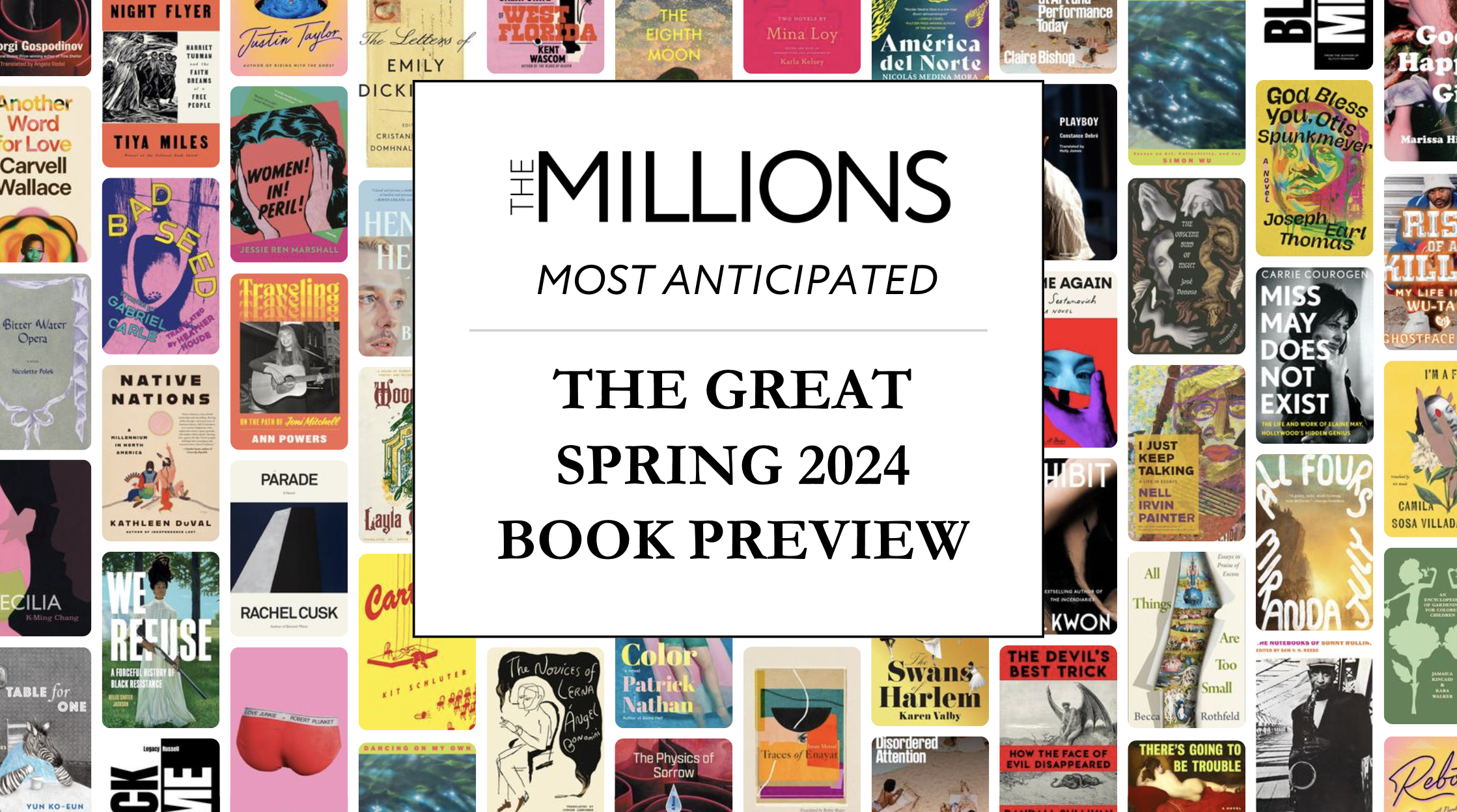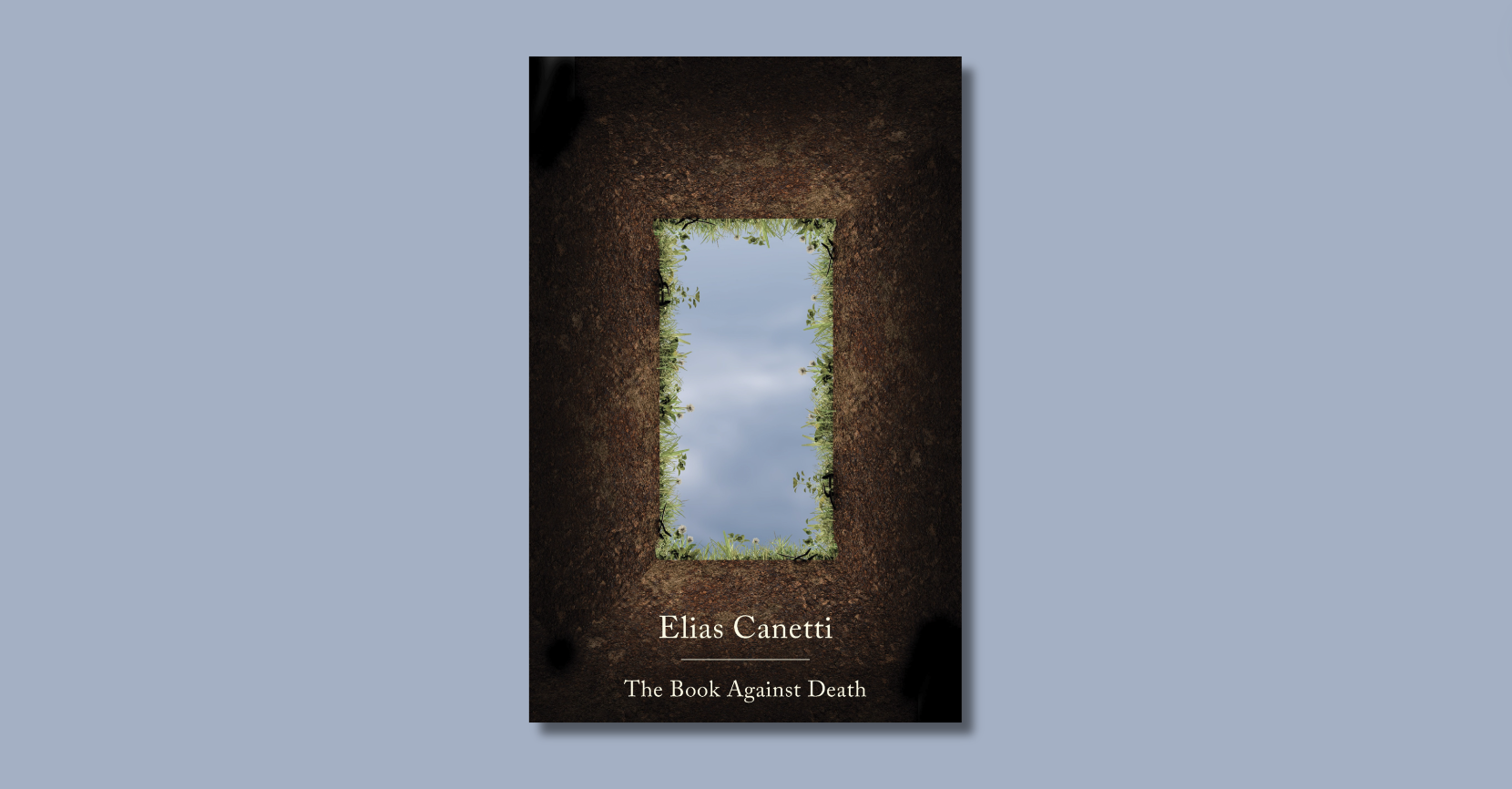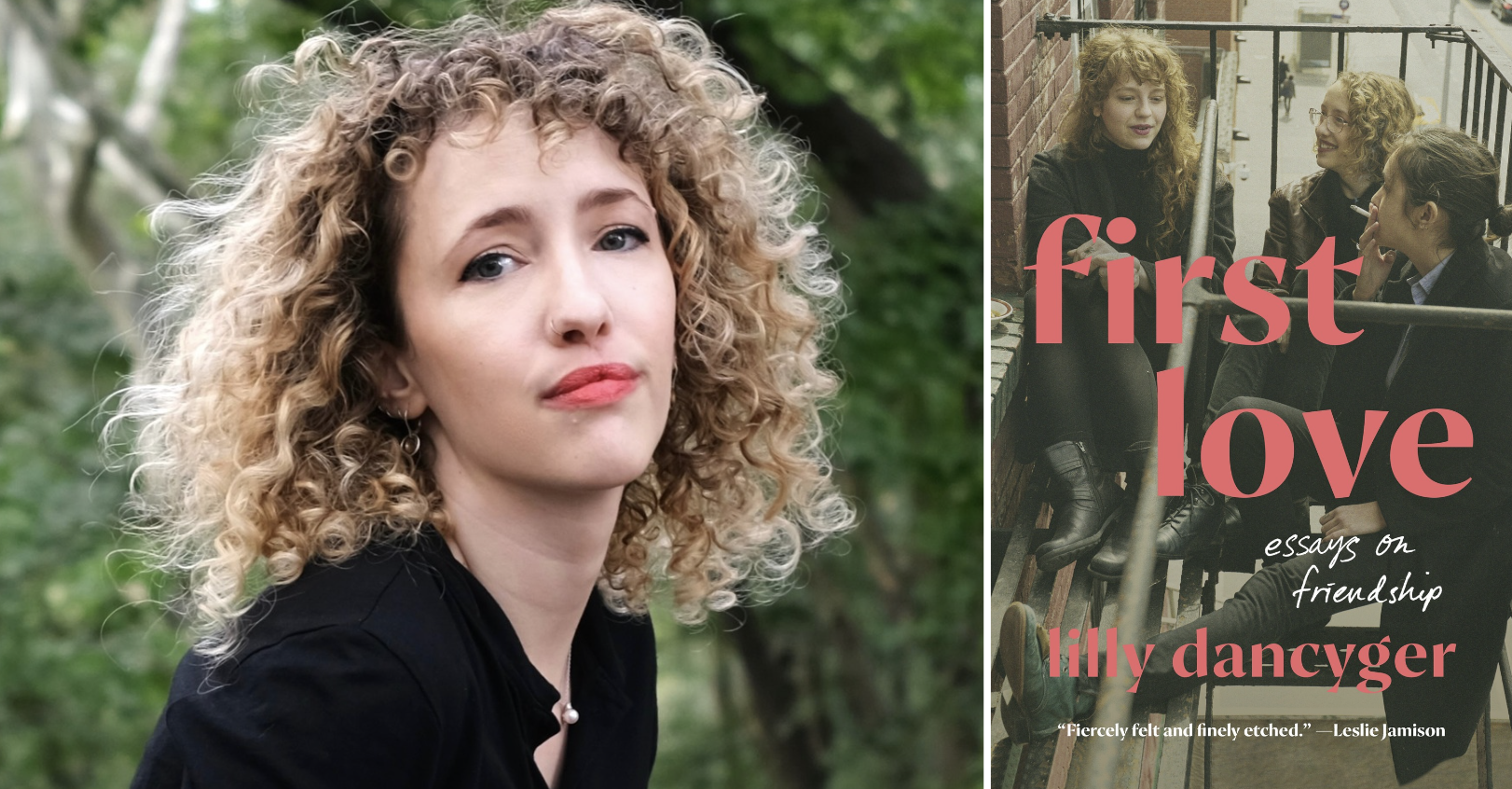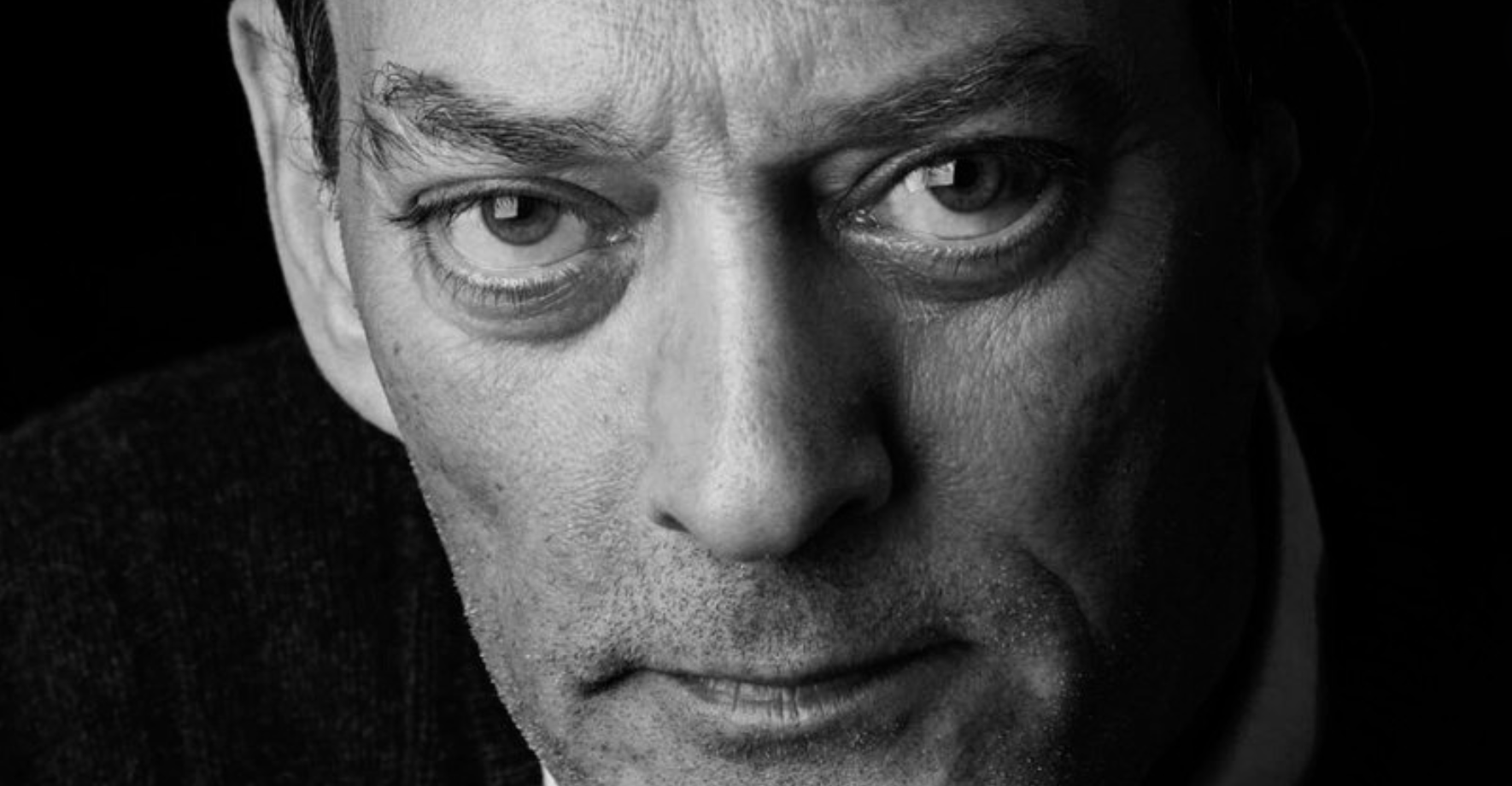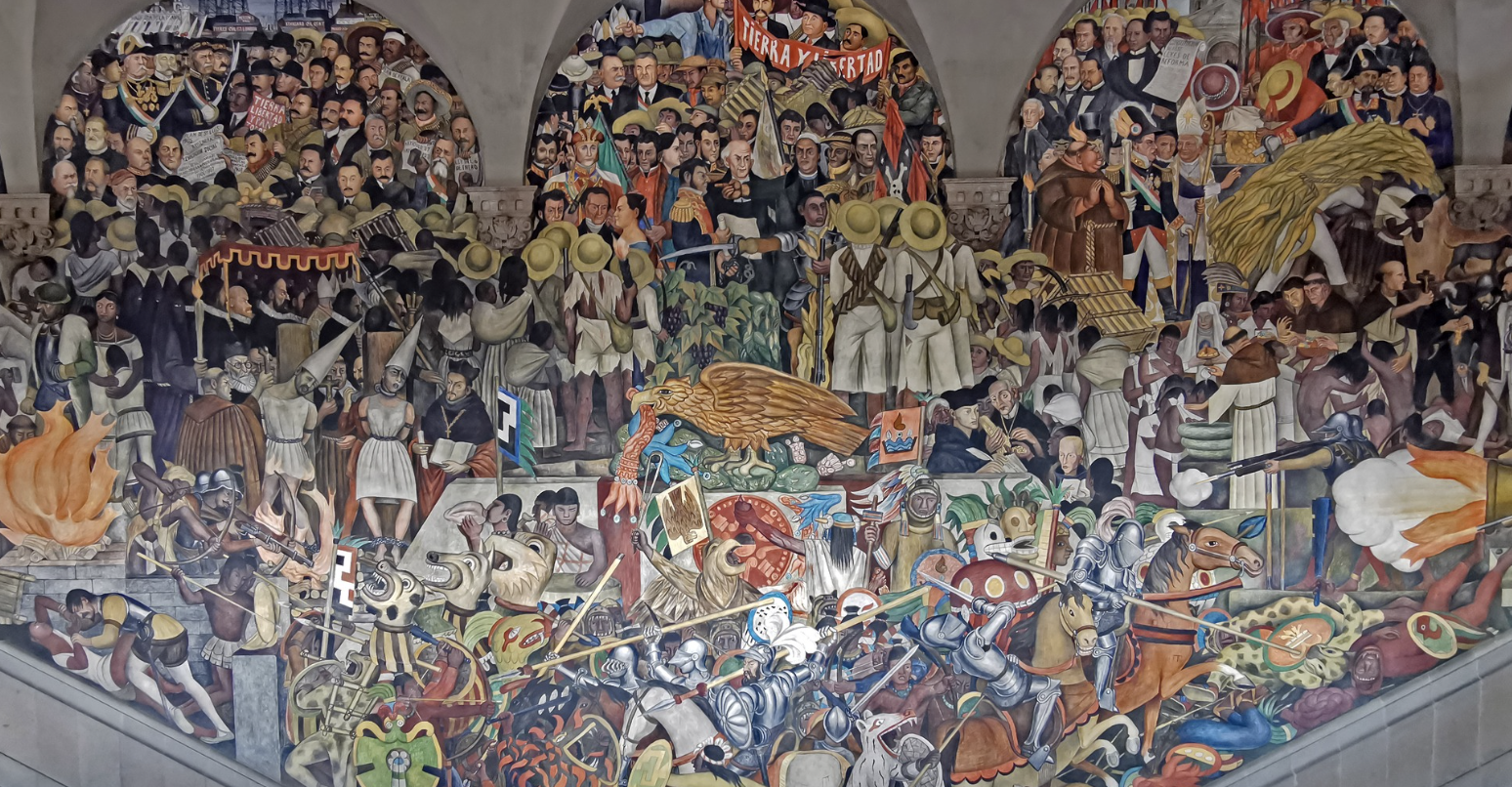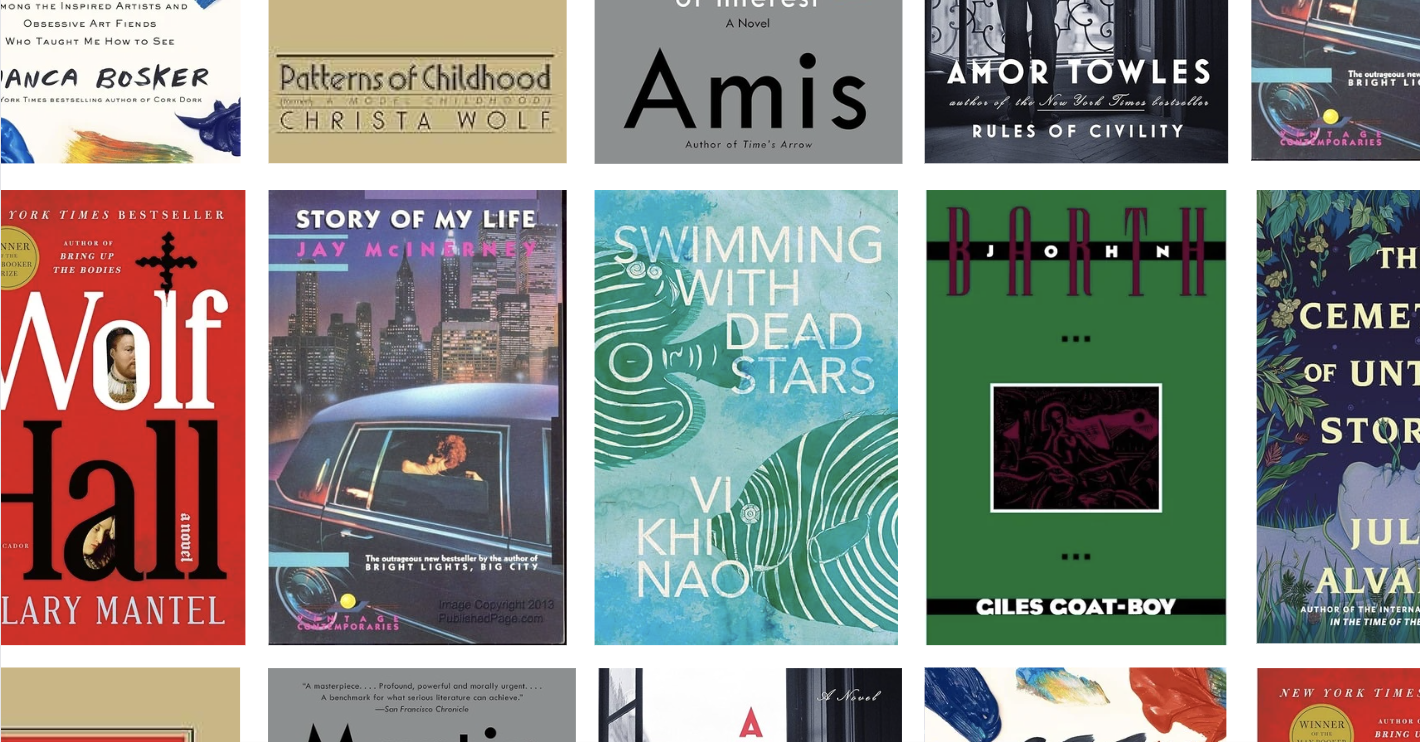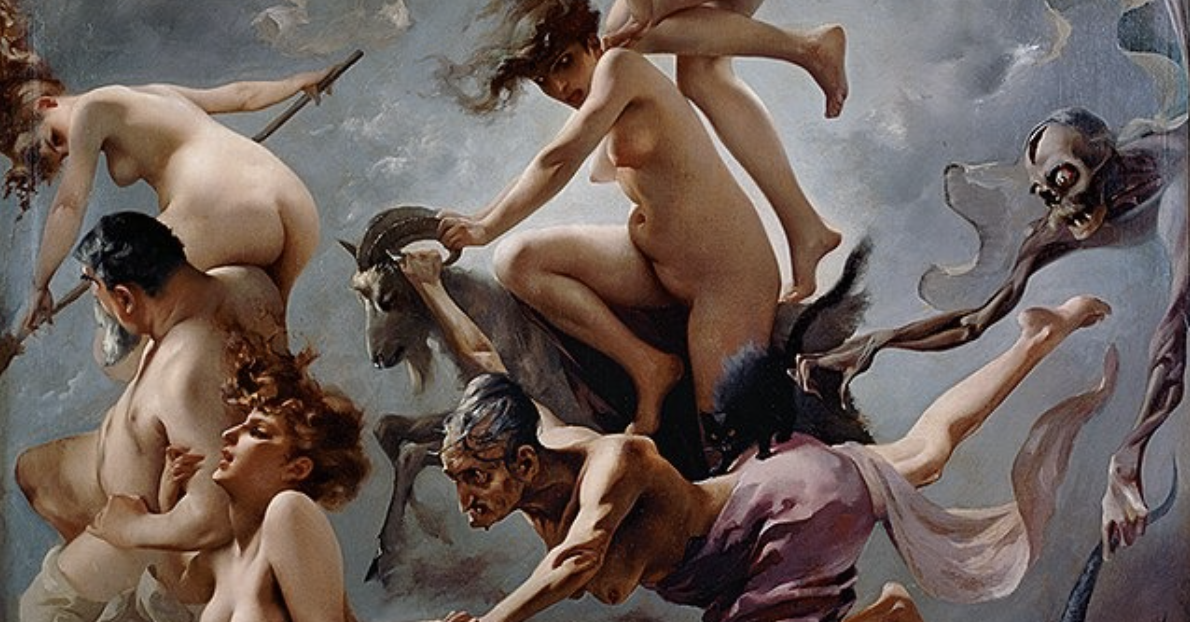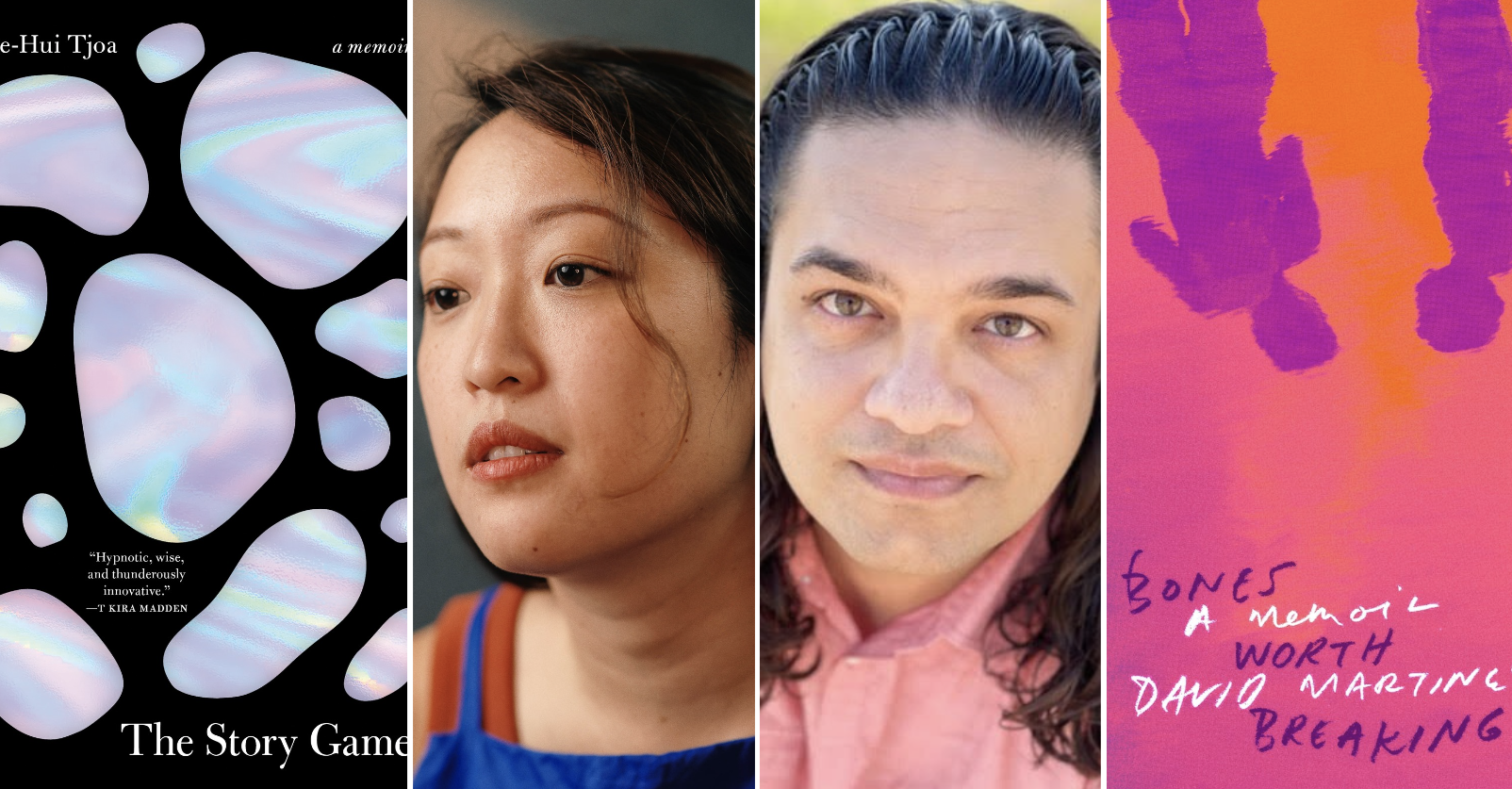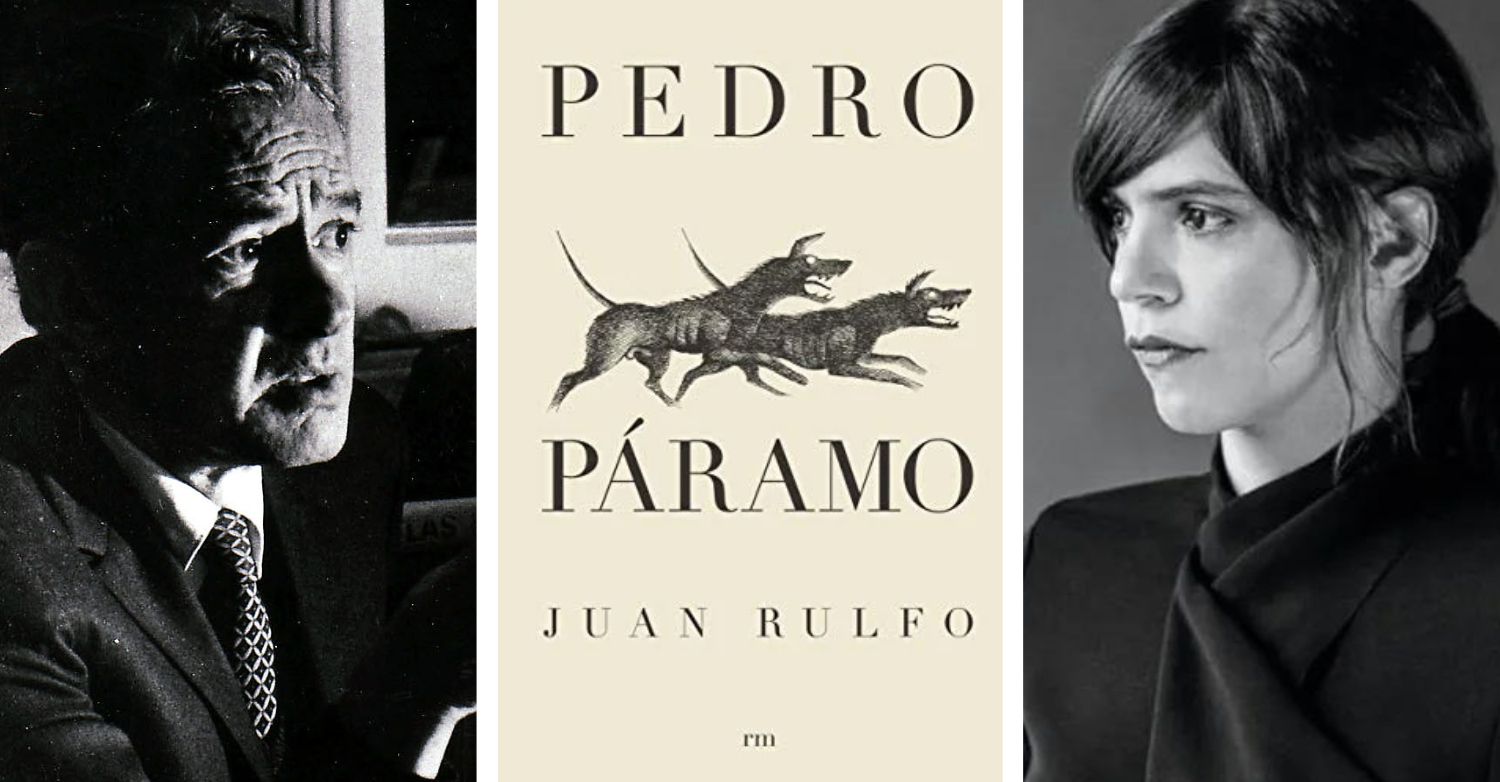 Gene Luen Yang, at 36, is not too much younger than the figures in our pop culture – think Margaret Cho and Lucy Liu – who have forced a re-examination of the Asian immigrant’s negotiation with the American landscape. But between Quentin Tarantino’s loving fetishization of Japan in Kill Bill and Cho’s jokes about her childhood dreams of growing up to play a Vietnamese hooker in movies, Yang’s celebrated graphic novel American Born Chinese (2006) served as a much-needed exploration of the dilemma that has faced the Asian-American as it has every minority. The book interweaved three stories: an adaptation of a Chinese classic, Wu Cheng’en’s 16th-century novel Journey to the West which featured the famous Monkey King; an ’80s sitcom parody featuring a horrendous Asian-American stereotype named Chin-Kee; and a more straightforward tale of a Chinese-American adolescent who balances a friendship with a recent Chinese immigrant and his infatuation with a white girl at his school.
Gene Luen Yang, at 36, is not too much younger than the figures in our pop culture – think Margaret Cho and Lucy Liu – who have forced a re-examination of the Asian immigrant’s negotiation with the American landscape. But between Quentin Tarantino’s loving fetishization of Japan in Kill Bill and Cho’s jokes about her childhood dreams of growing up to play a Vietnamese hooker in movies, Yang’s celebrated graphic novel American Born Chinese (2006) served as a much-needed exploration of the dilemma that has faced the Asian-American as it has every minority. The book interweaved three stories: an adaptation of a Chinese classic, Wu Cheng’en’s 16th-century novel Journey to the West which featured the famous Monkey King; an ’80s sitcom parody featuring a horrendous Asian-American stereotype named Chin-Kee; and a more straightforward tale of a Chinese-American adolescent who balances a friendship with a recent Chinese immigrant and his infatuation with a white girl at his school.
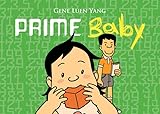
 Yang’s work has become a little more funny and a little more sad. This year he has come out with two books. The Eternal Smile, which he wrote and Derek Kirk Kim illustrated, collects three stories about simulations and dreams. The title piece is a fascinating amalgamation of Don Rosa’s “Scrooge McDuck” comics and The Truman Show. Prime Baby, a piece that originally appeared in the New York Times Magazine, is a comedy about the narcissism of childhood.
Yang’s work has become a little more funny and a little more sad. This year he has come out with two books. The Eternal Smile, which he wrote and Derek Kirk Kim illustrated, collects three stories about simulations and dreams. The title piece is a fascinating amalgamation of Don Rosa’s “Scrooge McDuck” comics and The Truman Show. Prime Baby, a piece that originally appeared in the New York Times Magazine, is a comedy about the narcissism of childhood.
I met Yang in Minneapolis on June 18 where he was in town to give a few talks. Yang lives with his wife and three small children in San Jose, where he grew up, and where he teaches high school computer science. We spoke about his Catholicism and his childhood as the son of Taiwanese immigrants. He is a polite and relaxed interviewee.
The Millions: In American Born Chinese, but also in your other books, there’s a strong preoccupation with very outmoded Asian stereotypes like the Fu Manchu mustache in Prime Baby or Chin-Kee in American Born Chinese. When you were growing up there were certainly Asian stereotypes on television and in American popular culture but they had changed at that point. It was no longer Fu Manchu or Chin-Kee, it was more likely to be the very wise Mr. Miyagi in The Karate Kid or the really smart invention nerd in Goonies. So why are you more preoccupied with stereotypes from your parents’ or grandparents’ generation and not with stereotypes that you were growing up with at the time?
Gene Luen Yang: The way Chin-Kee looks I pull from old sources. I pull from political cartoons around the turn-of-the-century, with the queue and the clothes. But for his words and his actions, I really pull from sources from the ’80s all the way up to the present day. I grew up around the time of John Hughes and Long Duk Dong…from Sixteen Candles. Long Duk Dong is really into these white girls, which is why I have Chin-Kee really into Melanie here. [opens copy of American Born Chinese and points to scene.] And then later on [turns page] in the cafeteria scene, right here, he pees in somebody’s Coke. That was something I grew up with. “Me Chinese. Me play joke. Me go pee pee in your Coke.” Right here, he’s offering his cousin a bite of crispy-fried cat gizzards with noodles. Now that phrase, “crispy-fried cat gizzards with noodles” I pulled from a political cartoon from 2001.
TM: Really? Where was that cartoon?
GLY: It was actually a Pat Oliphant cartoon. When I saw it I was really mad. So that’s why I made a reference to Pat Oliphant here. I named the high school after him. And then the address of the school, that’s actually when the cartoon was published. It was published in April 9 of 2001. It was during the Chinese spy plane crisis. So he does this cartoon where Uncle Sam goes to this Chinese restaurant and he’s served a plate with crispy-fried cat gizzards with noodles. And this Chinese waiter is buck-toothed and slant-eyed and he spills these noodles all over Uncle Sam and Uncle Sam gets mad and goes out in a huff. It’s supposed to be this commentary on the Chinese spy plane crisis at the time.
I just feel we know when we see someone in a queue with buckteeth and super slanted eyes that that’s supposed to be outdated. Right? But then a lot of these sorts of things keep popping up in our culture. Just because it’s not wearing a queue we don’t recognize it as coming from the same source.
TM: So the idea was to make it so obviously racist by using racist images for the past to express the racism that is still prevalent in more subtle ways.
GLY: Exactly.
I make a reference to William Hung here. [turns to page where Chin-Kee sings “She Bangs”] Now William Hung is a very controversial character within Asian-American communities. He’s very divisive. Some people look at him and say, “Here’s this guy who’s actually very brave. He completely has no singing talent at all. But he’s very brave to get out there and try. And that’s why he’s so celebrated.” But there are other folks in the Asian-American community that feel like, “The reason why he got so popular is that [in] his performance – a performance that got circulated on YouTube – he really embodies a lot of these stereotypes. He’s awkward. He doesn’t have great teeth. He speaks with an accent.”
TM: It’s like an Asian Sambo.
GLY: He’s a stereotypical Asian guy trying to be the “American Idol.” And just as we find monkeys in tuxedos funny because monkeys don’t belong in tuxedos, maybe we find this stereotypical Asian guy funny because Asians don’t belong on “American Idol.” I don’t feel like there’s a solid interpretation, but I do think that’s worth exploring.
 TM: When I was in college I read the Arthur Waley translation of Monkey. It’s a bloodless translation. I hope someone does a better one. The proper title is Journey to the West. For Americans, if they know the story, they know it through the Arthur Waley translation. In China, I know that story is so popular now that a lot of people don’t even read the original text. They know the story through cartoons and comics. It’s the same way most Americans know the story of Huck Finn and Jim not through reading Huckleberry Finn but just through the way the characters of Huck Finn and Jim have appeared in our culture. Were you looking at comic book or cartoon interpretations from China of the Monkey story when you went about creating your own interpretation?
TM: When I was in college I read the Arthur Waley translation of Monkey. It’s a bloodless translation. I hope someone does a better one. The proper title is Journey to the West. For Americans, if they know the story, they know it through the Arthur Waley translation. In China, I know that story is so popular now that a lot of people don’t even read the original text. They know the story through cartoons and comics. It’s the same way most Americans know the story of Huck Finn and Jim not through reading Huckleberry Finn but just through the way the characters of Huck Finn and Jim have appeared in our culture. Were you looking at comic book or cartoon interpretations from China of the Monkey story when you went about creating your own interpretation?
GLY: I was. I read the Waley translation. There’s a middle grade translation called Monkey by this guy named David Kherdian that reads a lot better. It’s meant for middle grade kids so it’s a lot more exciting and accessible. And I think in spirit at least it captures the original stories a little bit better, even if the Waley translation is more accurate.
I was really intimidated, to be honest, by the cartoon adaptations I saw. In China – not just in China, in Asia – everybody has done something with the Monkey King. Osamu Tezuka did something with the Monkey King. There’s so many Monkey King comics that he’s almost a genre in and of himself. So, for me, my main focus was trying to do something that hadn’t been done with him before. So originally, when I was thinking about doing a Monkey King comic, it wasn’t connected to the Asian-American experience at all. I just wanted to do a straight Monkey King adaptation. But after seeing so many brilliantly done straight adaptations in Asia I felt that I had to do something that none of those Asian artists could do. And that was [to] use the story to talk about the Asian-American experience.
TM: in the Monkey King chapters in the book you seem to meld the story with a Marvel Comics-style storytelling. Was that conscious?
GLY: I think that’s just sort of in my subconscious because I grew up reading that stuff. So anytime you get into the more adventure-y I think of it in a superhero way.
TM: I was surprised by some of the racism you depict in American Born Chinese because of your age and your place in San Francisco. I have this image of San Francisco being a very liberal place that has long had Asians.
GLY: In San Francisco that’s definitely true. I grew up a little bit further from San Francisco, in the suburbs of San Jose. As I was growing up there was this transition in the community. When we moved in, it was a big deal. My mom went to the school and asked for a list of the other Chinese families that were at the school. And there were two. And then we actually went and made house calls to them, to introduce ourselves. Nowadays in the same community that’s weird. You would be acting like a freak.
TM: You don’t explore this in your books, but I am curious to know how it worked out in your own life. We always say Asian-American, but of course, Chinese, Japanese, Korean, Vietnamese, Thai…these are all extremely different cultures.
GLY: Yeah they are.
TM: And when they came to America they were all extremely different cultures.
GLY: And they were all extremely antagonistic towards each other. Especially the Japanese and the Chinese.
TM: You don’t really explore that in your book, but did you see that in your own life growing up?
GLY: I guess I saw it in a certain way. Junior high is when I experienced the most virulent racism. Just because I think junior high brings out the jerk in people.
TM: It’s a nasty time.
GLY: Yeah, generally nice people in normal life are really mean in junior high. That’s true for me and that’s true for other people I went to school with. So I experienced the most virulent racism in junior high. And that’s when I started hanging out with primarily Asian kids too. My closest group of friends were all Asian. And there are different Asians. There are Korean and Chinese and Japanese. So at the time it wasn’t a conscious choice but now looking back on it as an adult I do think that we sort of bonded because the folks who were taunting us didn’t really make distinctions between Japanese and Chinese. I was just as likely to be called a nip as I was a chink. Because we were treated the same we bonded together over that. But at the same time I think there was a difference when we got together outside of school. So outside of school sometimes we would get together with our families and at that point the Japanese and the Chinese sort of had this split.
TM: There are strong themes in American Born Chinese of self-hatred and seeing yourself as ugly because you don’t fit into the dominate racial category. I did have a sense in the way you drew the Asian protagonist and the white characters that you didn’t draw the white guys to look particularly beautiful, and the Asian guy was not drawn to be particularly ugly. There were similarities in the shape of the characters’ faces. Were you drawing everyone similarly to make a point?
GLY: I think it’s partially from my own limited cartooning skills. And I think it’s inherent within the nature of comics to simplify. So I think that plays a part in it as well.
I can’t cartoon ugly very well. I have a sort of a cutsiness to my drawing. It’s not a conscious choice. It’s just there.
TM: You just automatically go cute.
GLY: Well, I grew up wanting to be a Disney animator. So early on that’s just what I looked at and that’s how I tried to draw. Even when I got off of that, it’s still sort of there.
TM: Is that partly where the interest in the racist cartoons come from? Pretty much everything Disney films did up until the mid-’90s…
GLY: Had that component. Well, I wasn’t aware of it when I was little. It all came out of my college experience. That’s when I started thinking about culture and religion.
TM: Were you taking classes there that were pointing these things out?
GLY: I took sociology classes. One of the things that happened in college is that it was the first time that I was in a setting where I was part of a majority.
TM: Because Berkeley is one third Asian.
GLY: Yeah, and within the circles that I ran in – I was an engineering major – it was like all Asians. And I remember being really conscious that something was different. I really felt a confidence that I never felt before. It wasn’t something that I chose. It was just something that happened.
TM: There’s a religious angle in The Eternal Smile. It starts with a lot of Christian evangelical influences, but it seems to descend to more Asian religious influences. More Tao. This is the way. He will descend and connect with nature. Were you thinking that at all?
GLY: I do think the Christianity I experienced was definitely Asian-tinged. There was a lot of talk about “emptying yourself.” But the way it was expressed is that you empty yourself to make room for the spirit of God, as opposed to emptying yourself for the sake of emptying yourself. But there was this sort of talk. I remember my mom would come home from these Catholic retreats with these pictorial representations of Buddha’s journey. Because they would talk about them both together. I think it’s just part of how I understand religion. I don’t think it was necessarily something bad.
TM: Did you see anything sinister when your priest was telling everyone ways in which Jesus was just like Buddha or Confucius?
GLY: They never said “just like.” They definitely never said “just like.” They did talk about similarities. They did talk about Buddha as a starting point. Things like that. The priests, when I was growing up, the vast majority of them were Chinese. A lot of the impetus for faith for a lot of the folks in that community was a response to communism, or at least a response to their experience of communism. The priests I grew up with had been locked up for 25, 30 years. They were in labor camps and that sort of thing. Their faith was a way of expressing something about the value of human life. That’s what they were attracted to and that’s what they held onto.
TM: Prime Baby I thought was a hilarious piece at times. One thing you don’t see in comics or a lot of other things is kids who are absolute jerks. You see it on “South Park.” But in “South Park” it’s so over the top you can’t believe it. Eric Cartman is like a Nazi. Kids aren’t Nazis but they are disgusting in other ways. The protagonist of Prime Baby is such an awful little child, but you can’t stop loving this kid. Were you looking at yourself at eight-years-old and angry at the kind of kid you might have been, but still presenting him with a certain degree of affection?
GLY: His voice was very clear in my head and I don’t know why. Derek [Kirk Kim] has told me that he thinks that out of all the characters I have written Thaddeus is most like me. (laughs). I don’t know how to take that. The story itself was inspired by what I was seeing at home. I have this boy. He’s six-years-old now. And I also have two daughters now. But when my first daughter was born my boy really liked her until she started walking around. And then all the sibling rivalry started coming up. And he’s not evil the way the main character is in here. And I remember before she was born thinking he was the sweetest little kid and then I saw this total mean streak come out in response to his little sister. So that was sort of the impetus of this. And the voice just came out. It was clear in my head. It was some of the easiest writing that I’ve done.
TM: The slug aliens in Prime Baby reminded me of the aliens in the Toy Story movies. They’re the sweetest group of things ever but they seem completely and utterly unaware of the evil of the world.
GLY: Well, I wasn’t thinking of Toy Story but that is a very similar set of characters. You’re right. I think it’s more of a parody of a certain type of Christian or religious person. I was debating between making them feel more like Buddhist monks or making them feel more like Christians. And I ended up going more on the Christian side. Because that’s the world that I’m a little more familiar with. Going Buddhist would have seemed like I was making fun of other people, but going Christian would have been more making fun of me and my friends or me and my family. It felt a little bit easier.
So that’s why I have them wearing the saltshakers, because they’re slugs wearing saltshakers. It’s like the cross. The cross is a device to kill people. So the saltshaker is a device to kill slugs. And they’re singing a song that they used to make us sing in Sunday School: “I’ve got peace like a river.”
TM: None of your endings are happy endings in and of themselves. You always feel that your characters have lost something. Do you always feel that they gained more than they lost?
GLY: Yeah, I think so. Thaddeus basically is closed off to everybody. To be open to one person at the end is a very big deal. I’ve thought about that too. Why it’s so hard for me to write a straight up happy ending. Maybe I don’t believe in them. Maybe I don’t believe that there’s pure happiness in this world. Maybe I just don’t believe that that’s true. I always feel that I experience that in my own life, that even in the happiest moments in my life there’s something that taints it.
